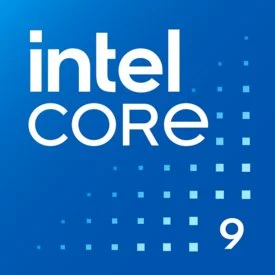Gadgetviza » Processors » Intel Core Ultra 5 134U
Intel Core Ultra 5 134U

Key Details for Intel Core Ultra 5 134U
- memory
Total Core No.
12 - screenshot_monitor
Max. Frequency
4.4 Ghz - width_normal
Technology
7 nm - storage
No of Threads
14 - developer_board
iGPU
Intel Graphics - hub
NPU
Intel AI Boost
Related Processor








































Compare Related Processor
Detail Specification of Intel Core Ultra 5 134U
General | |
|---|---|
Brand?The manufacturer or company that produces the processor, such as Intel or AMD. The brand often signifies the processor's architecture and overall quality. | Intel |
Code Name?An internal name used by the manufacturer during the development of a processor architecture. It often indicates the generation or specific design of the processor. | Intel Meteor Lake-H |
Series Name?The marketing name given to a specific family of processors within a brand's lineup, such as Intel Core i7 or AMD Ryzen 5. Series names help categorize processors based on performance and target market. | Intel Core Ultra Series 1 |
Model Name?The marketing name given to a specific family of CPUs within a brand's lineup, such as 'Intel Ultra 5' or 'Intel Ultra 7'. Model names help categorize CPUs based on performance and target market. | Intel Core Ultra 5 |
Instruction Set?The set of commands that a processor understands and can execute. Different instruction sets support varying levels of performance and compatibility with software. | X86 |
Launch Date | 12/2023 |
Vertical?The intended market segment or use case for the processor, such as desktop, laptop, server, or embedded systems. It indicates the processor's design and features tailored for specific applications. | Laptop |
CPU | |
|---|---|
Total No. of Cores?The total number of physical processing units within the processor. More cores allow the processor to handle multiple tasks simultaneously, enhancing multitasking performance. | 12 |
No. of P-Cores?The number of Performance cores (P-cores) within the processor. P-cores are designed for high-performance tasks and demanding applications. | 2 |
P-Cores Base Frequency?The standard operating speed of the Performance cores (P-cores), measured in gigahertz (GHz). It indicates the P-cores' baseline performance level. | 0.7 Ghz |
P-Cores Boost Frequency?The maximum speed a P-core can reach under heavy load, measured in gigahertz (GHz). It represents the P-cores' peak performance capability. | 4.4 Ghz |
No. of E-Cores?The number of Efficiency cores (E-cores) within the processor. E-cores are designed for power efficiency and handling background tasks. | 8 |
E-Cores Base Frequency?The standard operating speed of the E-cores, measured in gigahertz (GHz). It indicates the E-cores' baseline performance level. | 0.5 Ghz |
E-Cores Boost Frequency?The maximum speed an E-core can reach under heavy load, measured in gigahertz (GHz). It represents the E-cores' peak performance capability. | 3.6 Ghz |
No of LE-Cores?The number of Low Energy cores (LE-cores) within the processor. LE-cores are designed for very low power consumption and handling extremely light tasks. | 2 |
LE-Cores Base Frequency?The standard operating speed of the LE-cores, measured in gigahertz (GHz). It indicates the LE-cores' baseline performance level. | 0.4 Ghz |
LE-Cores Boost Frequency?The maximum speed an LE-core can reach under heavy load, measured in gigahertz (GHz). It represents the LE-cores' peak performance capability. | 2.1 Ghz |
No. of Threads?The number of virtual processing units a core can handle simultaneously. Threads enable a single core to process multiple instruction streams, enhancing efficiency. | 14 |
L1 Cache?The smallest and fastest cache memory level, located closest to the processor cores. It stores frequently accessed data for rapid retrieval. | 112 KB (per core) |
L2 Cache?A mid-level cache memory that provides a larger storage capacity than L1 cache. It stores data that is less frequently accessed than L1 but more frequently than L3. | 2 MB (per core) |
L3 Cache?The largest and slowest cache memory level shared by all processor cores. It stores data that is less frequently accessed than L2 but still needed for efficient operation. | 12 MB (shared) |
L1 Cache(E-core)?The L1 cache memory dedicated to the Efficiency cores (E-cores). It stores frequently accessed data for rapid retrieval by the E-cores. | 96 KB (per core) |
L2 Cache(E-core)?The L2 cache memory dedicated to the Efficiency cores (E-cores). It provides a larger storage capacity than the E-cores' L1 cache. | 2 MB (per module) |
Multiplier?A factor that determines the processor's clock speed by multiplying the base clock frequency. It influences the overall operating speed of the processor. | 7x |
Unlocked Multiplier?Indicates that the processor's multiplier can be adjusted, allowing for overclocking to increase performance beyond the default specifications. | No |
Perfomance Score | |
|---|---|
Cinebench R23 (Single core)?Measures a CPU's single-core performance using Cinema 4D's rendering engine | 1552 |
Cinebench R23 (Multi core)?Multi-Core: Evaluates a CPU's multi-core performance, utilizing all cores for rendering | 8724 |
Cinebench 2024 (Single Core)?Tests single-core efficiency using Redshift rendering engine | 90 |
Cinebench 2024 (Multi Core)?Assesses multi-core performance with Redshift rendering over a 10-minute test | 622 |
Geekbench 6 (Single Core)?Benchmarks a CPU's single-threaded performance in real-world tasks | 2208 |
Geekbench 6 (Multi Core)?Measures multi-core processing power across various workloads | 9524 |
Package | |
|---|---|
Technology?The process used to create the processor, measured in nanometers (nm). Smaller manufacturing processes typically result in more efficient and powerful processors. | 7 nm |
Base Power Consumption?The typical power consumption of the processor under normal operating conditions, measured in Watts (W). It indicates the processor's energy efficiency. | 9 watt |
Max. Power Consumption?The maximum amount of power the processor can consume under heavy load, measured in Watts (W). It represents the processor's peak power usage. | 30 watt |
Socket?The physical interface on the motherboard where the processor is installed. The socket type determines compatibility between the processor and motherboard. | FCBGA2551 |
Max. Temperature?The maximum safe operating temperature for the processor, measured in degrees Celsius (°C). Exceeding this temperature can lead to performance degradation or damage. | 110°C |
IGPU | |
|---|---|
IGPU Name?The specific name given to the integrated Graphics Processing Unit (IGPU) by the processor manufacturer. It identifies the IGPU's architecture and capabilities. | Intel Graphics |
Base Frequency?The standard operating speed of the IGPU, measured in megahertz (MHz). It indicates the IGPU's baseline graphics processing power. | 600 MHz |
Boost Frequency?The maximum speed the IGPU can reach under heavy graphics load, measured in megahertz (MHz). It represents the IGPU's peak graphics performance. | 1.75 GHz |
Shading Units?The number of processing units within the IGPU responsible for rendering graphics. More shading units generally result in better graphics performance. | 512 |
Execution Units?The number of parallel processing cores within the IGPU. These units execute graphics instructions, and a higher number typically indicates better graphics performance. | 64 |
IGPU Power?The overall graphics processing capability of the integrated GPU. This is measured by how well it can handle graphical tasks, such as video playback and light gaming. | |
NPU | |
|---|---|
NPU Name?The specific name given to the Neural Processing Unit (NPU) by the processor manufacturer. It identifies the NPU's architecture and AI processing capabilities. | Intel AI Boost |
NPU TOPS?The processing power of the NPU, measured by how fast it can perform AI and machine learning operations. Higher NPU performance leads to faster AI-powered features. | 11 Tops |
Display & Memory Support | |
|---|---|
Memory Support?The types and speeds of RAM that the processor is compatible with. It specifies the maximum amount and speed of RAM that can be used with the processor. | Up to LPDDR5/x 6400 MT/s |
Max. Display Resolution Support?The highest resolution that the processor's integrated graphics or the processor in conjunction with a dedicated GPU can output to a display. It indicates the maximum visual fidelity the processor can support. | 7680 x 4320 @ 60Hz |
Features | PCIe 4, Thr. Director, DL Boost, AI Boost, vPro Enterp., RPE, MMX, SSE, SSE2, SSE3, SSSE3, SSE4.1, SSE4.2, AES, AVX, AVX2, AVX-VNNI, FMA3, SHA |
Product Link | Intel |
Overview: Intel Core Ultra 5 134U Processor
The Intel Core Ultra 5 134U, built on the Meteor Lake-H architecture, is a cutting-edge processor designed for ultraportable laptops. Featuring a hybrid 12-core configuration, integrated Intel Graphics, and state-of-the-art AI capabilities, this processor strikes a balance between energy efficiency and reliable performance. Engineered with a 7nm manufacturing process, it is ideal for lightweight laptop designs that prioritize battery life and performance.
Features and Specifications
Core Configuration and Efficiency
- Total Cores: 12 (2 Performance Cores (P-Cores) + 8 Efficiency Cores (E-Cores) + 2 Low-Efficiency Cores (LE-Cores))
- P-Cores:
- Base Frequency: 0.7 GHz
- Boost Frequency: 4.4 GHz
- E-Cores:
- Base Frequency: 0.5 GHz
- Boost Frequency: 3.6 GHz
- LE-Cores:
- Base Frequency: 0.4 GHz
- Boost Frequency: 2.1 GHz
- P-Cores:
The hybrid core architecture utilizes P-Cores for performance-demanding tasks, E-Cores for moderate workloads, and LE-Cores for lightweight background processes, ensuring energy-efficient multitasking.
Intel Graphics Integration
- Base Frequency: 600 MHz
- Boost Frequency: 1.75 GHz
- Shading Units: 512
Intel Graphics provides reliable rendering capabilities for casual gaming, media playback, and creative applications. With balanced graphical power, it supports a rich multimedia experience.
Memory and Display Compatibility
- Memory Support: LPDDR5/x (up to 6400 MT/s)
- Maximum Display Resolution: 7680 x 4320 @ 60Hz
With high-speed memory support and 8K resolution compatibility, the processor ensures seamless multitasking workflows while delivering stunning visuals for presentations, streaming, and light creative tasks.
Thermal Management and Power Efficiency
- Base Power Consumption: 9 watts
- Maximum Power Consumption: 30 watts
Manufactured using a 7nm process, the Intel Core Ultra 5 134U achieves impressive energy efficiency and effective thermal regulation, making it suitable for ultraportable laptops with extended battery life.
AI Optimization
- Neural Processing Unit (NPU): Intel AI Boost
- Performance Power: 11 TOPS
Intel AI Boost enhances multitasking efficiency and introduces adaptive system intelligence, optimizing real-time applications and AI-powered functionalities like voice recognition and system adjustments.
Use Cases for Intel Core Ultra 5 134U
1. Lightweight Productivity Machines
With its compact design and energy-efficient architecture, this processor is ideal for ultraportable laptops focused on basic productivity tasks and battery longevity.
2. Multimedia Engagement and Streaming
Intel Graphics ensures smooth visuals for streaming high-definition content, casual gaming, and video playback, delivering a reliable multimedia experience for everyday use.
3. Seamless Multitasking for Workflows
The hybrid core configuration supports diverse workflows, allowing users to efficiently manage multiple applications without compromising performance.
4. AI-Enhanced System Optimization
Intel AI Boost powers intelligent system optimization, enabling real-time enhancements and smarter functionalities, empowering laptops with adaptive computing capabilities.
Updated:





